Matcha Varieties and Their Uses in Tea Ceremony
Basic Classification of Matcha: Koicha and Usucha
In tea ceremony, matcha is broadly divided into two types: “koicha” (thick tea) and “usucha” (thin tea). This classification involves not only differences in thickness but also many differences in their roles in tea gatherings, quality of tea leaves used, and preparation methods.
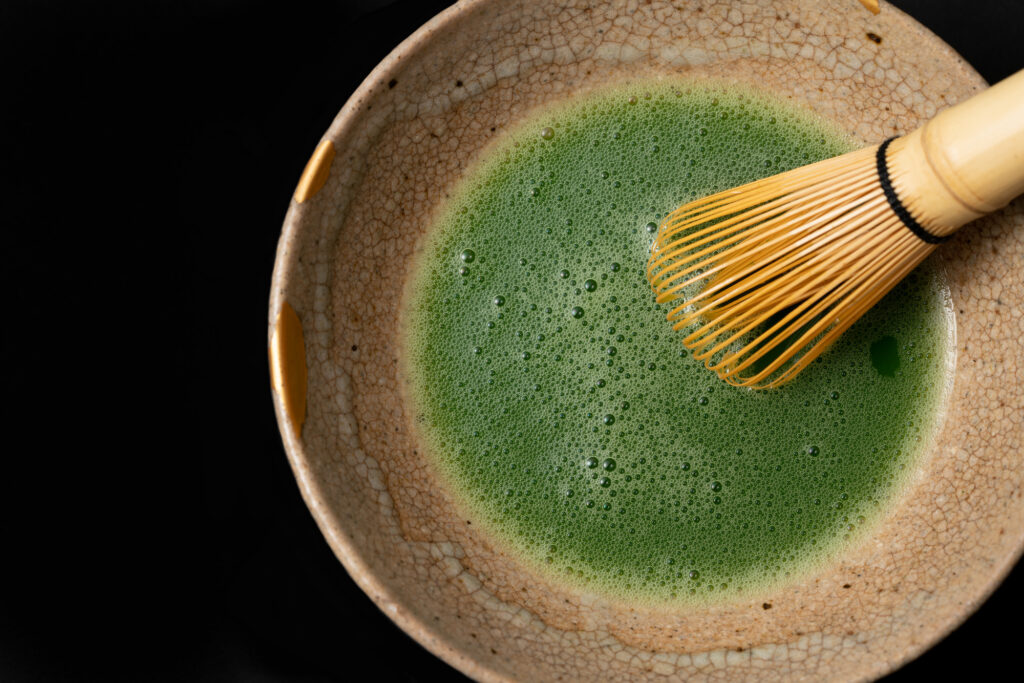
Koicha is the most highly regarded matcha in formal tea ceremonies, generally characterized by a richer taste and deeper aroma than usucha. It is often served in a style where guests drink from the same tea bowl in turns, using high-quality young leaves such as “honmino” and “onimino.” On the other hand, usucha is served individually in separate bowls to each guest, typically using tea leaves of grades such as “okumino” and “hamino.”
Matcha Grading and Quality Standards
Matcha quality is primarily evaluated based on “aroma,” “color,” “taste,” and “particle size.” High-grade matcha used in tea ceremony has the following classifications:
- Highest Grade: Honmino (本簑), Onimino (鬼簑)
- Premium Grade: Okumino (奥簑), Hamino (葉簑)
- Medium Grade: Shouro (松露), Hakugou (白毫)
- Standard Grade: Uji Matcha, Superior, Medium, Regular
According to a survey by the Japan Tea Industry Central Association, high-grade matcha for tea ceremony accounts for only about 15% of total matcha production, with honmino class being particularly rare at less than 1%.
Seasonal Selection and Usage in Tea Ceremony
In tea ceremony, matcha is selected according to the season and formality of the tea gathering. In spring tea gatherings, pale green matcha that evokes the freshness of young leaves is preferred, while in winter gatherings, deep green matcha with richness is often favored.
Additionally, in chaji (formal tea gatherings), it is common to first serve “koicha” followed by “usucha.” This is called “sennou-kouhaku” (first thick, later thin), reflecting the aesthetics of tea ceremony where one enjoys the essential taste of tea with koicha first, then experiences a lighter lingering flavor with usucha.
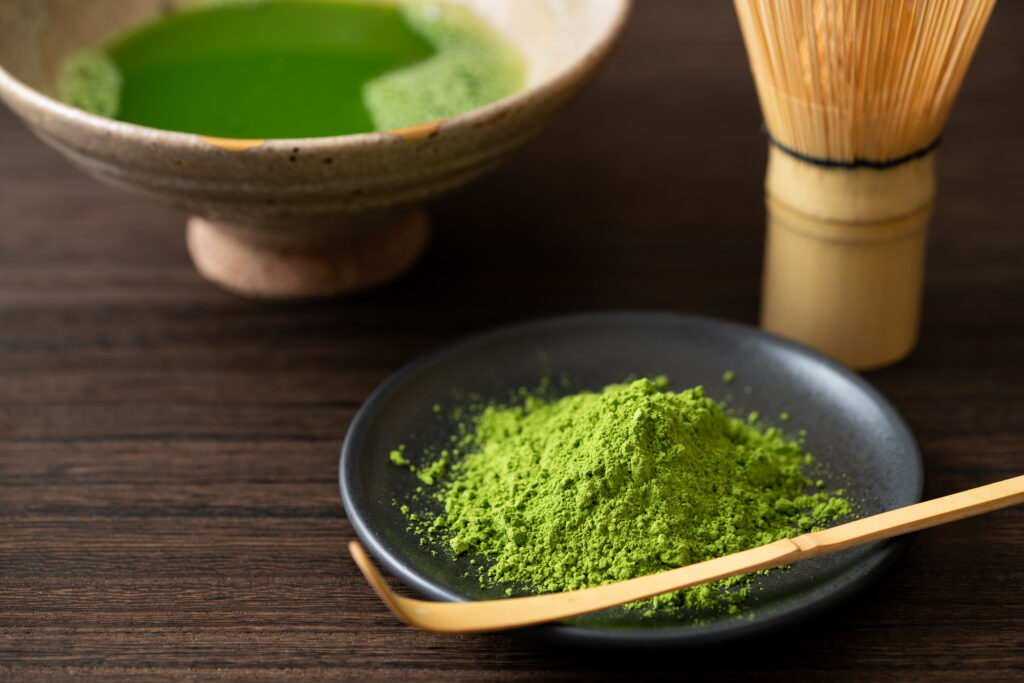
Understanding how to select and use different types of matcha is the first step to appreciating the depth of tea ceremony and is key to enriching your matcha experience at home.
Basic Classification of Matcha: Differences and Characteristics of Koicha and Usucha
In tea ceremony, matcha is broadly divided into two types: “koicha” and “usucha.” This is not merely a difference in thickness but an important distinction that differs in purpose, etiquette, and taste. To deeply understand matcha, it is essential to know this basic classification.
Koicha (Thick Tea) – The Ultimate Deep Flavor
Koicha is considered the most formal matcha in tea ceremony and is made from the highest quality tea leaves. Generally, about 4 grams of matcha is used per tea bowl and whisked with a small amount of hot water (about 40ml) in a kneading motion. Its characteristics are as follows:
- Taste: Very rich with deep umami and strong astringency
- Usage: Served as the centerpiece of formal tea gatherings
- Drinking Method: Traditionally, one tea bowl is passed around and shared by multiple people
- Preparation Method: The tea whisk is moved in an “M” or “W” pattern, kneading without creating foam
Koicha uses particularly high-quality tea leaves called “tencha” and is usually classified in premium grades such as “Shouhaku” or “Shouro.”
Usucha (Thin Tea) – An Everyday Companion
Usucha is matcha that can be enjoyed more casually compared to koicha. About 1.5-2 grams of matcha is used per tea bowl, whisked with about 70ml of hot water:
- Taste: Smooth and easy to drink, with subdued bitterness and astringency
- Usage: Often served at everyday tea gatherings or for beginners
- Drinking Method: Enjoyed individually, one bowl per person
- Preparation Method: The tea whisk is moved in a pattern resembling the character “no” (の) or figure “8,” creating fine bubbles
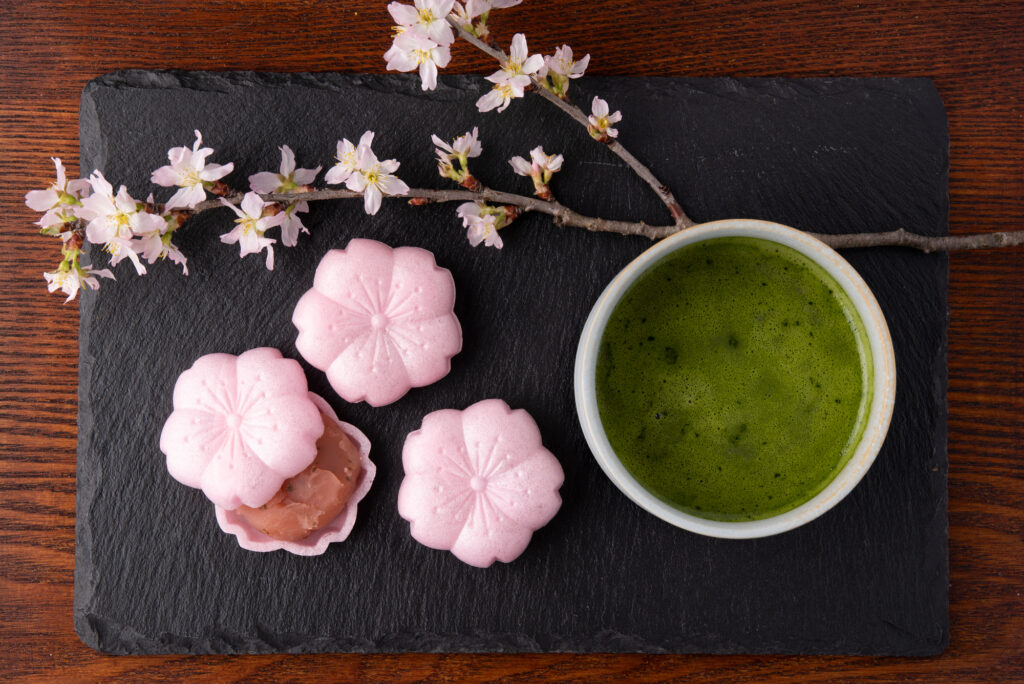
Usucha typically uses grades such as “Shoufuu” or “Shouryoku” and is widely used in modern times for everyday home consumption, café menus, and making sweets.
In actual tea ceremony, during formal gatherings, it is common to first enjoy koicha with sweets, followed by usucha with different sweets. This order of “koicha followed by usucha” makes sense both in terms of taste and etiquette.
For matcha beginners, it is recommended to start with usucha and gradually challenge the deeper taste of koicha. Understanding the characteristics of each will allow you to further enjoy the depth of matcha.
Understanding Matcha Quality through Grading: How to Distinguish from Superior to Inferior Grades
Guidelines for Determining Matcha Grades
The world of matcha has a clear grading system, with quality classified by color, aroma, and particle size. Since there are significant differences not only in flavor but also in price between superior and inferior grades, having the discerning eye to choose matcha suitable for your purpose is important.
The highest grade matcha is made from tea leaves called “tencha” and is characterized by a vibrant green color, rich sweetness, and smooth mouthfeel. On the other hand, lower grades tend to be darker in color with stronger bitterness and astringency.
Grading Standards Emphasized in Tea Ceremony
Matcha used in tea ceremony is mainly classified as follows:
- Superior Grade (for koicha): Vibrant green color with high aroma and strong umami. Often labeled with terms like “organic cultivation,” “first flush,” or “hand-picked.” Price range: 5,000-10,000+ yen per 100g.
- Medium Grade (for quality usucha): Vibrant green color but slightly inferior to superior grade. Good balance of aroma and umami. Price range: About 3,000-5,000 yen per 100g.
- Inferior Grade (for general usucha and confectionery): Somewhat yellowish-green color with subtle aroma. May have noticeable bitterness or astringency. Price range: About 1,000-3,000 yen per 100g.
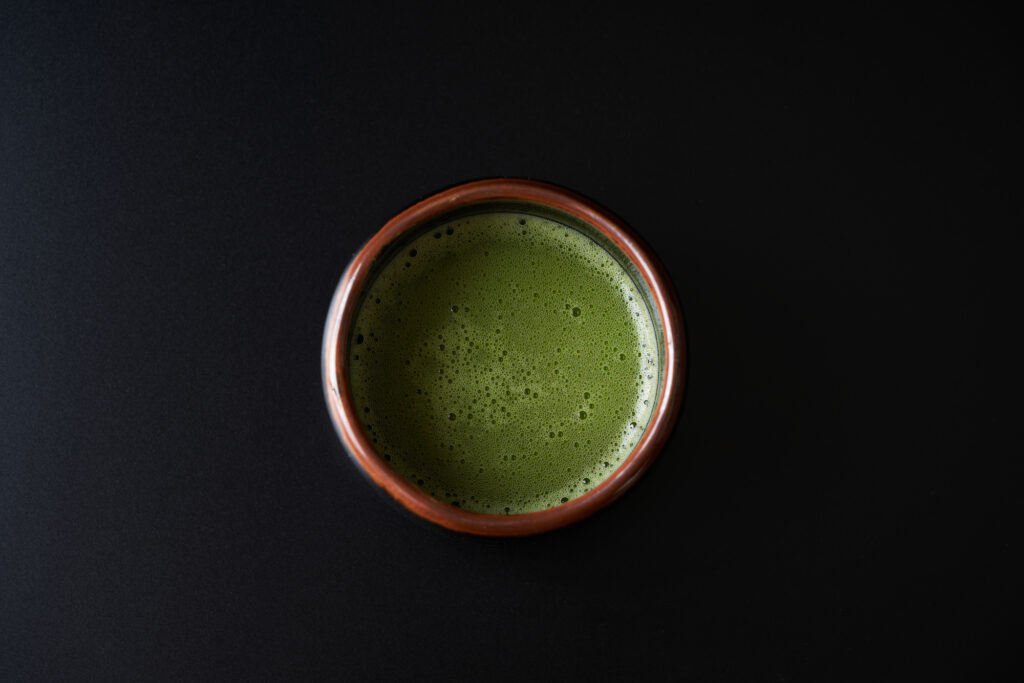
According to a survey by the Japan Tea Instructor Association, 87% of experienced tea ceremony practitioners use “vibrancy of color” as their primary criterion for quality judgment.
Key Points for Selecting Matcha at Home
Specific checkpoints for determining grade are:
- Color: High-quality matcha has a vibrant green color without yellow or brown tints
- Aroma: Superior grades have a strong fresh aroma with a sense of sweetness
- Particle Size: The finer the powder with smoother texture, the more premium
- Origin: Products from traditional tea regions such as Kyoto (Uji), Shizuoka, Aichi, and Fukuoka have consistent quality
To enjoy an authentic matcha experience at home, selecting according to purpose is essential. Choose superior grades for koicha, medium grades for everyday usucha, and lower grades for making sweets to balance cost-performance and satisfaction.
Production Regions and Distinctive Flavors of Matcha Used in Tea Ceremony
Japan’s Three Major Matcha Regions and Their Evaluation in Tea Ceremony
Matcha used in tea ceremony varies greatly in flavor and color depending on its production region. Especially Nishio in Aichi Prefecture, Uji in Kyoto Prefecture, and Yame in Fukuoka Prefecture, known as “Japan’s three major matcha areas,” are highly regarded by tea ceremony practitioners. These regions produce distinctive matcha due to differences in climate and soil.
Uji Matcha: Matcha produced in and around Uji City, Kyoto Prefecture, is considered the most traditional and formal in tea ceremony. Uji matcha is characterized by smooth sweetness, deep umami, and rich aroma. It is often used as “koicha” and served in formal tea ceremony settings. Matcha made from high-grade tea leaves called “tencha” in Uji is treasured by tea ceremony practitioners for its rich flavor.
Regional Flavor Characteristics and Usage in Tea Ceremony
| Region | Flavor Characteristics | Primary Uses in Tea Ceremony |
|---|---|---|
| Uji (Kyoto Prefecture) | Smooth sweetness, deep umami, rich aroma | Koicha for formal gatherings, usucha for advanced practitioners |
| Nishio (Aichi Prefecture) | Refreshing bitterness, vibrant green color, crisp sensation | Everyday usucha, suitable for tea ceremony beginners |
| Yame (Fukuoka Prefecture) | Balance of smoothness and freshness, elegant sweetness | Seasonal tea gatherings, wide range from usucha to koicha |

Nishio matcha is characterized by its refreshing bitterness and vibrant green color, often enjoyed as “usucha” in daily settings. It tends to be used in tea ceremony classes for beginners. Meanwhile, Yame matcha has a balanced smoothness and freshness, preferred for seasonal tea gatherings.
In the world of tea ceremony, the grading of matcha by production region is also important. For example, according to a survey by the established Uji tea shop “Kanbayashi Shunsho Honten,” about 78% of tea ceremony practitioners responded that they prioritize the production region for formal tea gatherings. Especially in the Urasenke and Omotesenke schools, the tradition of carefully selecting region and grade according to the formality of the gathering, season, and guests continues to this day.
Since matcha flavor changes not only with production region but also cultivation methods, manufacturing processes, and storage conditions, a comprehensive quality assessment is conducted in tea ceremony.
Selecting and Using Matcha According to Season and Tea Gathering
Seasonal Tea Gatherings and Harmony with Matcha
Japanese tea ceremony values seasonality. Based on the spirit of “wa-kei-sei-jaku” (harmony, respect, purity, and tranquility), selecting matcha according to the season enhances the atmosphere of the tea gathering. In spring, bright-colored matcha reminiscent of young grass is common; in summer, refreshingly flavored matcha; in autumn, deep green matcha; and in winter, matcha with strong flavor.
Matcha Selection According to Formality and Setting
The selection also varies depending on the formality of the tea gathering. In formal gatherings, “koicha” is centered, using the highest grade matcha. According to a survey supervised by the Urasenke grand master, 87% of formal tea gatherings serve koicha. On the other hand, casual gatherings or beginner-oriented tea sessions often focus on “usucha,” selecting matcha with a relatively approachable taste.
| Type of Tea Gathering | Recommended Matcha | Characteristics |
|---|---|---|
| Formal Gathering (Main Ceremony) | Premium Koicha (Shouhai, Yuukou, etc.) | Deep umami and aroma, rich taste |
| Informal Gathering | Medium to Superior Grade Usucha | Balance of freshness and moderate umami |
| Beginners’ Tea Session | Approachable Usucha | Mild bitterness, easy-to-drink taste |
Selecting Matcha According to Guests
The preferences and experience level of guests invited to the tea gathering are also important considerations. For those not accustomed to matcha, usucha varieties such as “Hatsukokoro” or “Matsukaze” with subdued bitterness are suitable. For experienced tea ceremony practitioners, higher-grade koicha such as “Shouhai” or “Yuukou” allows them to enjoy deep flavors.
Among tea ceremony practitioners, there is a concept of “ichigo-ichie tea tailored to the guest,” and providing the optimal matcha experience for each visitor is considered the host’s thoughtfulness. By understanding the types and grades of matcha and selecting them according to season, setting, and guests, one can embody the depth of tea ceremony and the delicacy of Japanese culture.
ピックアップ記事


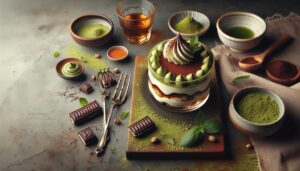
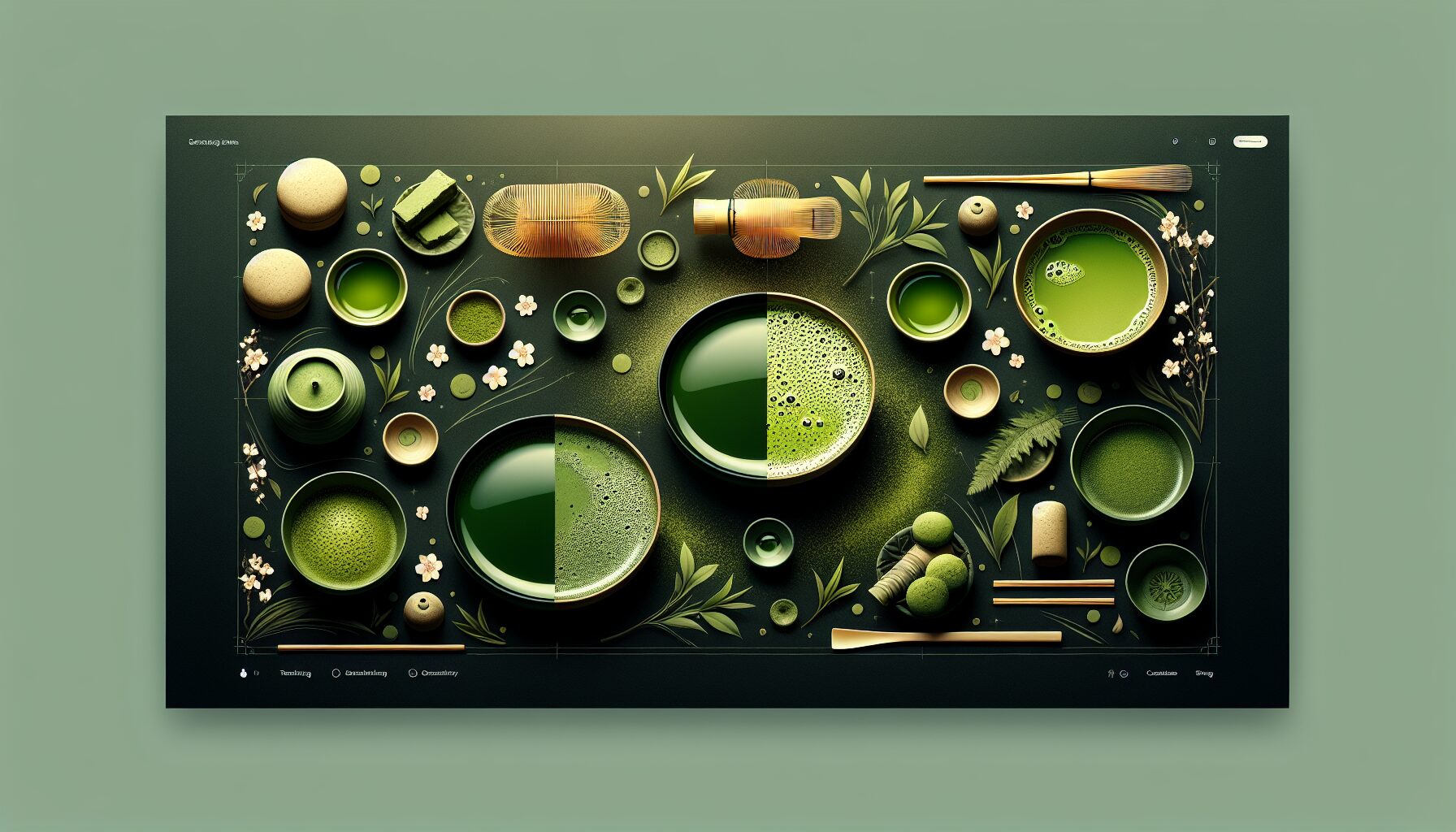

Comments